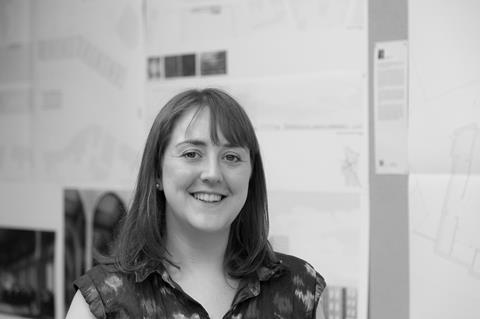If architects want to command respect, and higher fees, they must learn to better articulate the true value of what they do, writes Eleanor Jolliffe

Architects are underpaid. Architects are undervalued. Architects are a broken profession. Architects are not sufficiently ethnically, educationally or socially diverse.
All fair comment, all regularly raised, but all missing the point. While these are all problems in and of themselves, they are also symptoms of a narrative that has been carefully crafted over the past two hundred years or so to convince the world that architects are professionals.
Anyone who has occasionally read my columns over the last few years may have noted an increasing preoccupation with the history of architectural practice. This eventually resulted in me buying a lot of old books, reading a great deal, irritating some academics with many questions, and then writing a book on the history of architectural practice with Paul Crosby of the AA.
Please do look out for it, Architect: The evolving story of a profession, published by RIBA. However, this is slightly besides the point. I only mention it to note I have spent time over several years considering the trajectory of my – our – profession over time.
Since the very first hints of architectural societies in the 18th century, architects have been trying to convince others that they’re not an extension of the building trades (cowboy or otherwise); and that we are, in fact, practically the social equals of the elites who commission our work.
The theory of how humanity could and should respond to built form is uppermost in our minds and education
The problem is that the word “work” often implies “money” and the insinutation of such grubby transactions was anathema to many eighteenth century luminaries. Much better that architects be seen as “all but the social equals of the elites who commission our art”.
Architects, in short, are snobs.
Think about architectural history. We will happily retell the glories of the Italian Renaissance, and linger for far too long on the utopian thinking of post-war visionaries: “if only the people who moved in had understood how to use Robin Hood Gardens”. And don’t start me on the love of classical ruins. The theory of how humanity could and should respond to built form is uppermost in our minds and education.
There is no harm to this as such – in fact there is a great deal of good in most of it – but it misses quite a considerable part of the history. It is, if you will allow me, the instagram version.
The real life version includes fights between Italian Renaissance architects and the masons’ guilds they were undercutting; it includes architects taking pay cuts to work for local authority architects offices and impose their visions on an unsuspecting public. And it includes an awful lot more mundane, gritty, inglorious muddy days on site or talking through the best way to waterproof an eaves detail.
Architects have spent the last couple of centuries attempting to convince society that ours is an intellectual profession, rather than an extension of the building crafts. In our histories we rarely celebrate the design skills of the master masons or the technological breakthroughs (and the associated construction challenges) following World War Two.
There are no awards for really well coordinated services, or elegant integration of structure and form
We will, for example, speak happily of Robert Adam reviving classical architectural styles or his time studying the ruins of Italy and Croatia; but not that he owned a brick works, patents on several types of stucco and did surveying work to regularise his income. Indeed, all these he owned in complex business partnerships with his brothers, perhaps to keep it more discrete in his own era.
But back to our own symptoms – the unforeseen consequences of the attempted intellectualising and social aggrandisement of architecture. The reason we can’t convince the world that we are worth paying more is because we won’t admit to the unglamorous bits. We won’t celebrate the skill of a 5,000 door schedule with no mistakes.
There are no awards for really well coordinated services, or elegant integration of structure and form. They sometimes merit a throw away line in a write up; but when was the last time you saw an interview or an architect’s description that spent more space on the process of building than on the conceptual idea? No wonder clients think design is easy and quick, and not worth paying large sums for.
We celebrate the concept, and the finished product. We choose to communicate architecture by glossing over the effort, the hard work, and the endless coordination meetings. Our awards speeches don’t applaud the impossibility of marrying up competing and contradictory regulations, standards and briefs, the sheer tedium of setting out or checking long schedules. This is all without mentioning the hard work of the often hundreds of people actually on site building the thing.
If we want to be better valued for the process we go through to enable the creation of good buildings, then we need to celebrate that process. We should stop hiding it due to an inherited intellectual snobbery. We should stop perpetuating that snobbery in our education and coverage of architecture. We’re underselling ourselves by presenting only the edited highlights of what we do.
The process may be mundane, but it can be glorious. However, if we don’t celebrate it ourselves how will we ever convince anyone it is worth paying us to do it?
Postscript
Eleanor Jolliffe is a practicing architect and co-author of Architect: The evolving story of a profession
















6 Readers' comments